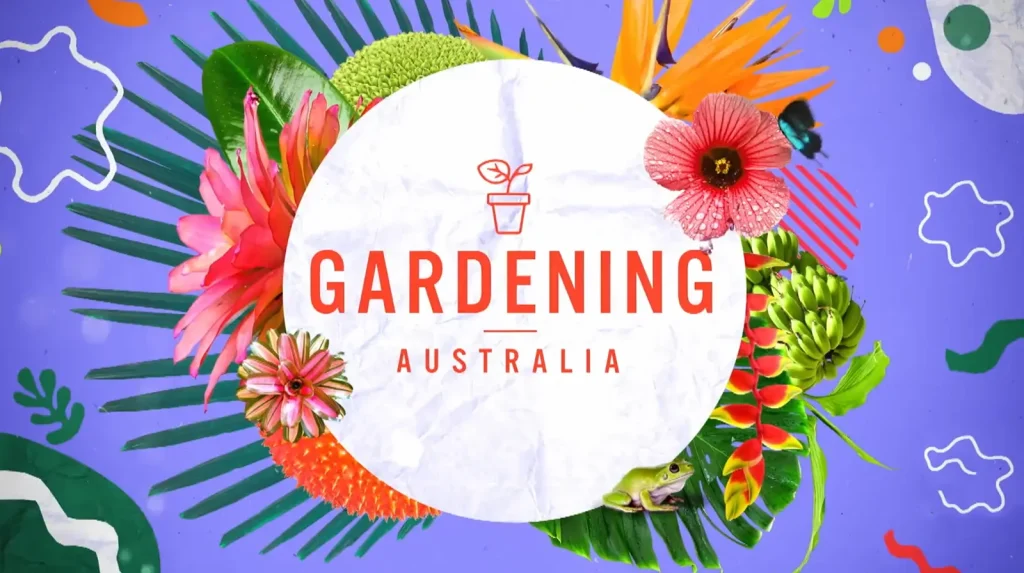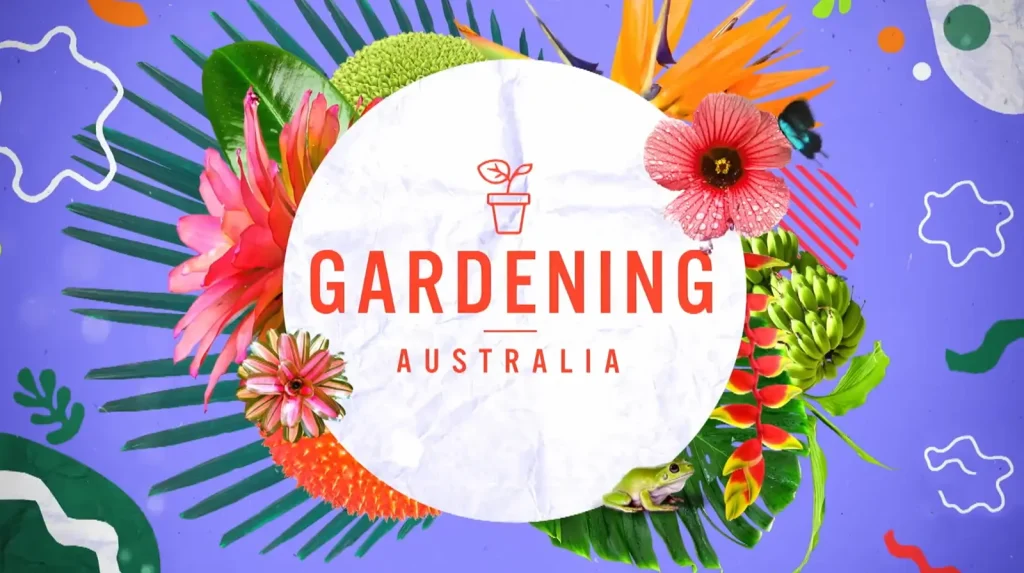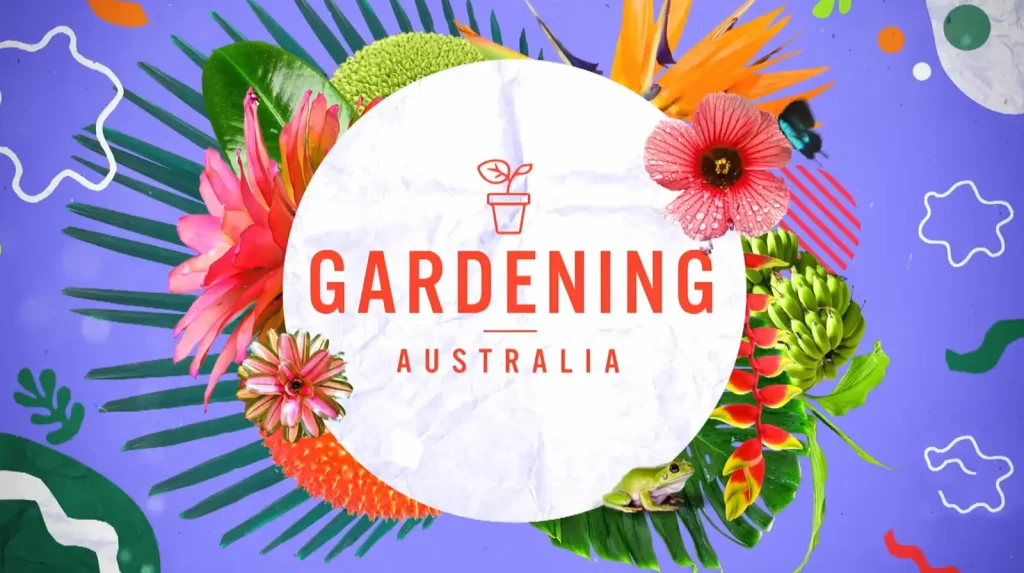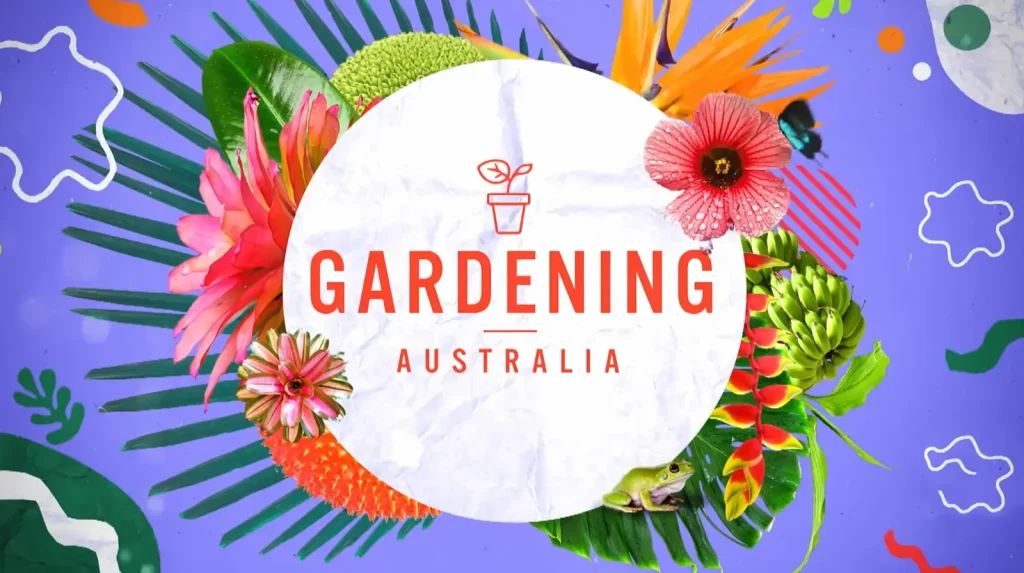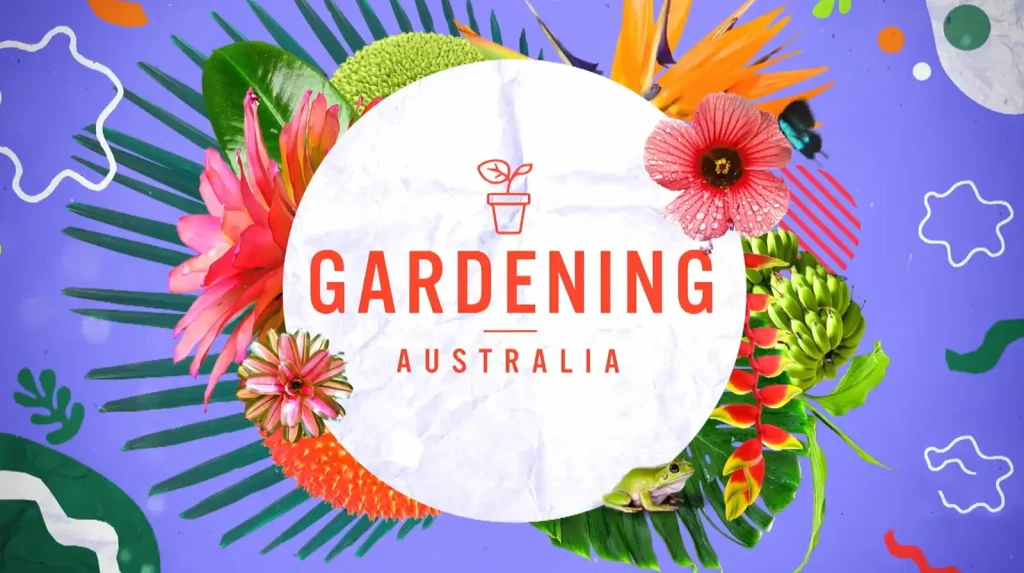Gardening Australia 2024 episode 16: the show’s passionate hosts take viewers on an engaging journey through the wonders of autumn gardening. This episode promises to deliver a rich blend of horticultural knowledge and practical advice, perfectly suited for both novice gardeners and seasoned green thumbs. First, we join Jerry, who delves into the fascinating world of ferns. He meets with an avid collector specializing in staghorn and elkhorn ferns, two species renowned for their unique beauty and impressive adaptability. The collector shares insights into the care and cultivation of these magnificent plants, offering tips on how to incorporate them into both indoor and outdoor garden spaces.
Viewers will learn about the specific needs of these ferns, including light, humidity, and mounting techniques, making them a stunning addition to any garden. Next, Jane takes the spotlight to demonstrate innovative methods for growing fruits in limited spaces. As urban living often comes with space constraints, Jane’s segment is particularly valuable for city dwellers who aspire to cultivate their own fresh produce. She showcases various techniques such as vertical gardening, container planting, and the use of dwarf fruit tree varieties. Jane’s practical advice empowers viewers to maximize their garden’s potential, regardless of size, ensuring that fresh, home-grown fruits are within everyone’s reach.
The episode then transitions to Costa’s visit to a remarkable urban farm that is breaking barriers and fostering inclusivity. This unique farm provides hands-on training for deaf and hard of hearing students, equipping them with valuable skills in sustainable agriculture. Costa explores how the farm operates, highlighting its innovative approaches to urban farming and community engagement. Interviews with students and instructors reveal the profound impact this initiative has on participants, offering both personal growth and professional development. Costa’s segment not only showcases the farm’s agricultural achievements but also emphasizes the importance of accessibility and diversity in horticulture.
Finally, Sophie takes viewers on a tour of a spectacular dryland garden. In regions where water conservation is crucial, dryland gardening offers a sustainable solution without compromising on beauty. Sophie introduces a variety of drought-tolerant plants and demonstrates how to create a vibrant and resilient garden that thrives with minimal water. Her expert guidance covers soil preparation, plant selection, and irrigation techniques that cater to arid conditions. This segment is a treasure trove of information for gardeners facing water restrictions or those looking to adopt more environmentally friendly practices.
Throughout the episode, the hosts of Gardening Australia share their passion and expertise, providing viewers with a wealth of knowledge and inspiration. From the lush greenery of ferns to the ingenuity of rooftop farming, this episode celebrates the diversity and creativity of gardening. Whether you’re looking to enhance your plant collection, grow your own fruit, or design a sustainable garden, “Autumn: Fantastic Ferns & Rooftop Farming” offers something for everyone. Tune in to Gardening Australia 2024 to discover new gardening ideas and join a community of like-minded enthusiasts dedicated to cultivating a greener world.
Gardening Australia 2024 episode 16
Platycerium Ferns: Cultivation, Care, and Collecting Insights
Explore the fascinating world of Platycerium ferns with our comprehensive guide on their cultivation, care, and collection. Learn about the unique characteristics of staghorn and elkhorn ferns, and discover expert tips from renowned collector Sheldon McLeon.
The Passion for Platycerium Ferns
In the captivating world of gardening, few plants command attention quite like the Platycerium ferns. Enthusiasts of these remarkable epiphytes, such as Sheldon McLeon, find joy in their unique structure and growth habits. The allure of these ferns, which include the well-known staghorn and elkhorn varieties, lies in their distinctive fronds and epiphytic nature, allowing them to thrive in a variety of environments.
Collecting Platycerium Ferns: A Family Tradition
Sheldon McLeon’s fascination with Platycerium ferns stems from a deep-rooted family tradition. Influenced by his father and grandfather, Sheldon embarked on a journey to explore and collect various species within this genus. Among the most renowned are the Australian natives, the staghorn (Platycerium superbum) and the elkhorn (Platycerium bifurcatum). Discovering other species like Platycerium andinum, the only native American staghorn with its cascading foliage, fueled his passion even further.
The Rise of Dwarf Platycerium Forms
A burgeoning trend within the Platycerium community is the cultivation of dwarf forms. These miniature ferns, often no larger than an open palm, have captivated collectors worldwide. Sheldon’s innovative work in hybridizing these plants involves meticulous cross-breeding techniques. By mixing equal quantities of parent spores on high-quality moss and maintaining optimal moisture through light misting, he creates new hybrids with unique characteristics.
Cultivation Techniques and Care
Anchoring and Nutrient Absorption
Platycerium ferns secure themselves to host trees through large shield fronds that efficiently absorb nutrients and moisture. The distinctive horn fronds extend outward to capture sunlight and disseminate spores, ensuring the plant’s survival and propagation.
Optimal Growing Conditions
Sheldon emphasizes the importance of location for these ferns. A well-placed Platycerium will thrive, while an unsuitable spot may require relocation. Once settled, these ferns require minimal intervention but benefit from regular fertilization. Sheldon prefers using liquid or slow-release fertilizers every three weeks to promote robust growth.
Mounting and Repotting Techniques
When transitioning young staghorn plants from a 10cm pot, Sheldon mounts them into pre-formed, shield-shaped holders filled with sustainably sourced sphagnum moss. Over 12-18 months, as the roots expand, the plant can be moved to larger mounts or directly onto trees. Secure the plant with elasticated stockings or stretchy fabric until the roots firmly anchor themselves.
Advanced Care for Platycerium Ferns
Managing Indoor and Outdoor Environments
Sheldon’s experience with Platycerium ridleyi ‘Wide’ highlights the adaptability of these ferns. Originating from tropical regions, this cultivar can be transitioned indoors during cooler months, thriving under grow lights that simulate natural sunlight. These ferns are resilient to air conditioning and can endure winter temperatures as low as 10°C.
Watering Practices
One common pitfall in Platycerium care is overwatering. Sheldon advises allowing the plants to dry out between watering sessions, typically every two weeks. When watering, aim for the central gap in the shield fronds to prevent waterlogging. Nutrient-enriched solutions, such as seaweed extract, are used thrice consecutively, followed by plain water to maintain a balanced nutrient intake.
Featured Platycerium Varieties
- Platycerium superbum (Staghorn)
- Platycerium bifurcatum (Elkhorn)
- Platycerium andinum
- Platycerium bifurcatum subsp. willinckii ‘Jade Girl’
- Platycerium ‘Imperatrix’
- Platycerium andinum x elephantotis ‘Antis’
- Platycerium madagascariense
- Platycerium veitchii (Silver Elkhorn)
- Platycerium ridleyi
- Platycerium ridleyi ‘Wide’
Growing Fruit in Small Spaces: Maximizing Your Garden’s Potential
Meta Description: Discover expert tips on growing fruit in small spaces with techniques like espalier, hedging, and container gardening. Learn how to cultivate apples, pears, citrus, and berries in limited areas for a bountiful harvest.
Fruit Gardening in Small Spaces
Few things beat the taste of home-grown fruit, and the added benefits of beautiful foliage and shade make fruit trees a wonderful addition to any garden. Even with limited space, you can successfully grow a variety of fruit trees and vines by employing strategic gardening techniques.
Espalier: Maximizing Space Efficiency
Espaliered fruit trees are an excellent way to optimize space in a small garden. This ancient pruning technique trains branches to grow flat against a support, creating a two-dimensional shape. Most fruit trees, including apples and pears, can be adapted to this form.
How to Espalier Fruit Trees
- Choosing Branches: Select strong lateral branches to form the primary structure. Prune away any unwanted stems.
- Training Branches: Tie the chosen branches to a support structure using soft ties, ensuring they are evenly spaced and parallel to the ground.
- Maintenance: Regularly trim new growth to maintain the flat shape and encourage fruit production.
Hedging: Creating Functional Garden Borders
Hedging with fruit-bearing plants, such as feijoas, provides both a functional and aesthetic solution for small gardens. These plants can be placed as close as 50cm apart and still produce flowers and fruit.
Hedging Tips for Feijoas
- Regular Trimming: Light, frequent trimming helps maintain the hedge’s shape without stressing the plants.
- Spacing: Position plants close together to form a dense barrier.
- Harvesting: Feijoas produce egg-shaped fruit that can be used for jellies, jams, and cakes.
Arbours and Arches: Adding Vertical Interest
Deciduous vines like grapes can be trained over arbours and pergolas to create shaded walkways in summer, while allowing light through in winter once the leaves have dropped. This method is ideal for hot, temperate climates but less suitable for humid regions.
Using Arbours and Arches
- Grape Vines: Plant on the northern side of a house for optimal growth.
- Kiwiberry Arches: Smaller arches can support compact plants like kiwiberries, providing both decorative and edible benefits.
Containers and Pots: Versatile Growing Solutions
Container gardening is a versatile option for growing fruit in small spaces. Large containers are ideal for miniature varieties of apples, pears, and stone fruits. Citrus trees and pomegranates also thrive in pots with regular pruning to control their size.
Best Practices for Container Gardening
- Choosing Containers: Select large containers with good drainage.
- Soil Requirements: Use high-quality potting mix suitable for fruit trees.
- Maintenance: Regularly prune to maintain size and shape, and apply slow-release fertilizer during the growing season.
Berries in Pots: Meeting Specific Needs
Berries like blueberries require specific soil conditions that are easier to manage in pots. These plants prefer acidic soil with a pH between 4-5, consistent moisture, and excellent drainage.
Tips for Growing Blueberries in Containers
- Soil Mix: Use potting mix formulated for azaleas to meet their acidic soil requirements.
- Fertilization: Add slow-release fertilizer throughout the growing season.
- Watering: Ensure regular watering to keep the soil consistently moist.
- Variety Selection: Opt for self-pollinating varieties if planting a single blueberry bush.
Featured Plants for Small Spaces
- Pear (Pyrus cv.): Ideal for espalier and container gardening.
- Apple (Malus cv.): Versatile for espalier and pot cultivation.
- Feijoa (Feijoa sellowiana): Perfect for hedging with edible fruit.
- Grape (Vitis cv.): Excellent for arbours and pergolas.
- Kiwiberry (Actinidia arguta): Suitable for smaller arches.
- Pomegranate (Punica granatum): Thrives in large containers.
- Lemon (Citrus cv.): Great for pot cultivation with regular pruning.
- Blueberry (Vaccinium cv.): Best grown in pots with specific soil needs.
F.A.Q. Gardening Australia 2024 episode 16
Q: What are the main highlights of Gardening Australia 2024 episode 16?
A: This episode, titled “Autumn: Fantastic Ferns & Rooftop Farming,” covers a variety of gardening topics. Jerry explores the care and cultivation of staghorn and elkhorn ferns. Jane demonstrates methods for growing fruit in small spaces, including vertical gardening and container planting. Costa visits an urban farm training deaf and hard of hearing students in sustainable agriculture. Finally, Sophie showcases a spectacular dryland garden with drought-tolerant plants.
Q: How can I grow staghorn and elkhorn ferns successfully?
A: To grow staghorn and elkhorn ferns, it is essential to provide the right conditions. These ferns thrive in environments with adequate light, humidity, and proper mounting techniques. They absorb nutrients and moisture through their large shield fronds and need regular misting. Fertilizing every three weeks with liquid or slow-release mixes helps maintain their health. If they do not look happy after a month, consider relocating them.
Q: What innovative methods does Jane recommend for growing fruit in small spaces?
A: Jane suggests several innovative methods for growing fruit in small spaces. These include vertical gardening, container planting, and using dwarf fruit tree varieties. She emphasizes the importance of selecting a sunny spot and using rich, well-drained soil. Techniques like espaliering, which trains fruit trees to grow flat against a support, can maximize space. Regular pruning and proper care are crucial to ensure a bountiful harvest.
Q: How does the urban farm visited by Costa support deaf and hard of hearing students?
A: The urban farm visited by Costa provides hands-on training in sustainable agriculture for deaf and hard of hearing students. This inclusive initiative focuses on teaching valuable farming skills and promoting community engagement. The farm employs innovative approaches to urban farming and ensures that students gain both personal growth and professional development. Costa’s segment highlights the farm’s impact on participants and its contribution to accessible horticulture.
Q: What tips does Sophie offer for creating a successful dryland garden?
A: Sophie offers several tips for creating a successful dryland garden. She recommends using drought-tolerant plants that require minimal water. Proper soil preparation is crucial, as well as selecting plants that can thrive in arid conditions. Efficient irrigation techniques, such as drip irrigation, help conserve water. Sophie’s guidance includes choosing plants that provide beauty and resilience, ensuring the garden remains vibrant despite water restrictions.
